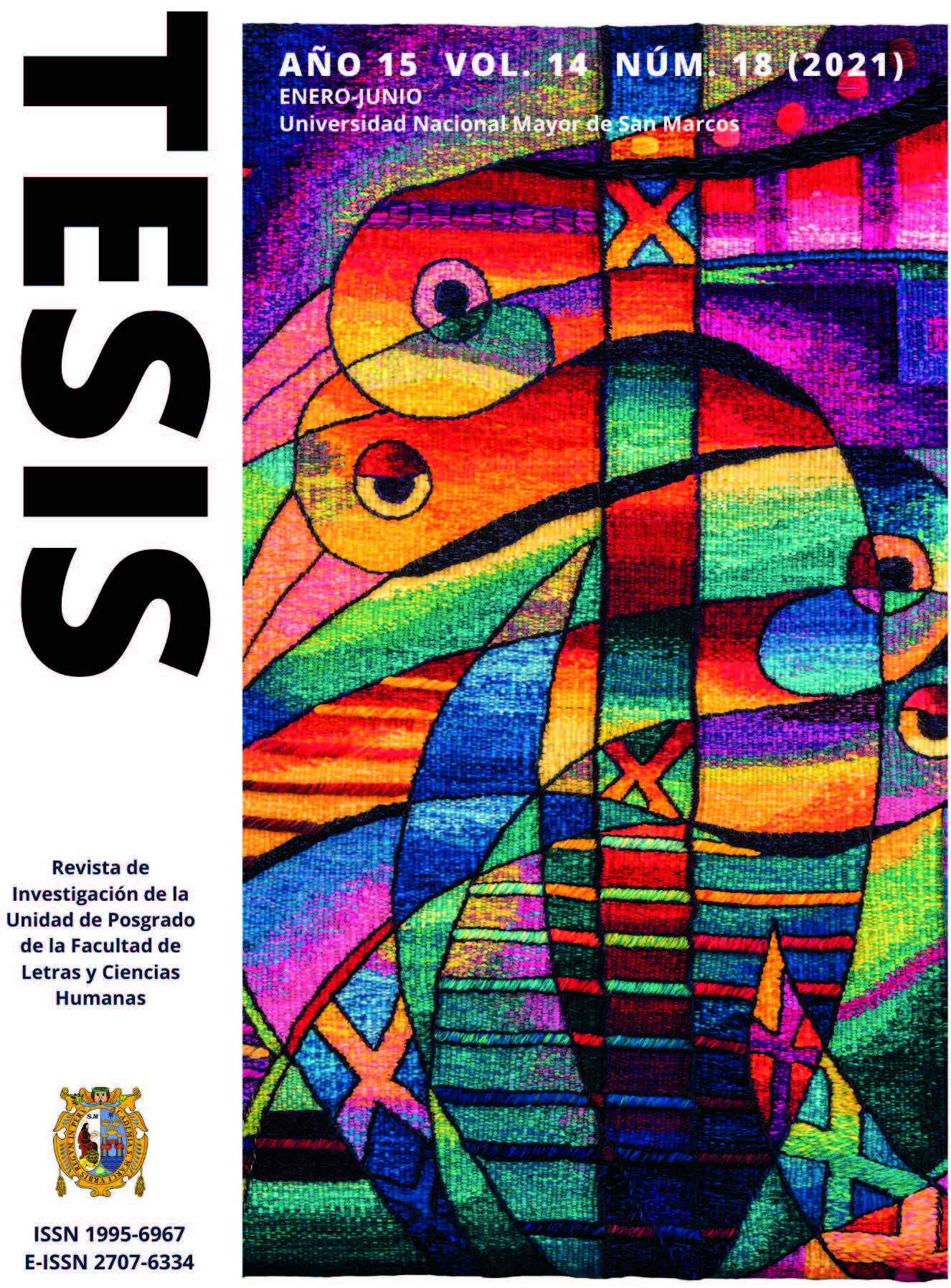Crónica de músicos y diablos: A narrative structure based on the transgression of the forms of the hegemonic discourse
DOI:
https://doi.org/10.15381/tesis.v14i18.19483Keywords:
literary carnival, menippean satire, Afro-Peruvian literature, hegemonic discourseAbstract
This paper is a critical study about Crónica de músicos y diablos (1991), one of Gregorio Martinez’s most remarkable novels, characterized by its historical inspiration and its popular trend. First at all the purpose of this research is to identify characteristics that associate the novel with the literary carnival and with the transgressions which are typical of Menippean satire. From this perspective, we propose that in terms of novel structure, the story evidences an appropriation of the narrative forms that construct the hegemonic discourse from the historical point of view (the epic novel, the historiographic chronicle, the travel chronicle, and the journalistic chronicle). We will explain that Martínez’s novel pretends to subvert this discourse using parody and humor to expose its cracks and shortcomings and, at the same time, develops a popular point of view about the conflictive Peruvian history.
References
Añón, V. (2014). Narrativas de viaje y espacialidad en crónicas de la conquista de América. Apuntes comparativos para una discusión. Anales de Literatura Hispanoamericana, 43, 13-31. https://revistas.ucm.es/index.php/ALHI/article/view/47164
Aracil, B. (2009). Hernán Cortés y sus cronistas: la última conquista del héroe. Atenea, (499), 61-76. https://scielo.conicyt.cl/pdf/atenea/n499/art_04.pdf
Bajtín, M. (1989). Teoría y estética de la novela. Taurus.
Bajtín, M. (1998). La cultura popular en la Edad Media y el Renacimiento. El contexto de François Rabelais. Alianza Editorial.
Bajtín, M. (2003). Problemas de la poética de Dostoievski (2.a ed.). Fondo de Cultura Económica.
Boetsch, P. (2003). La literatura de viajes y la mirada antropológica. Boletín de Literatura Comparada, 28-30, 49-62. https://bdigital.uncu.edu.ar/5094
Carazas, M. (2011). Estudios afroperuanos. Ensayos sobre identidad y literatura afroperuanas. Centro de Desarrollo Étnico.
Carrillo, D. (2010). Novelar es una travesía. Crónica de músicos y diablos o la gesta del migrante. [Tesis de pregrado, Universidad Nacional Mayor de San Marcos]. https://cybertesis.unmsm.edu.pe/bitstream/handle/20.500.12672/435/Carrillo_jd .pdf?sequence=1&isAllowed=y
Forgues, R. (2005). Gregorio Martínez: el espejo en que Narciso se mira y no se reconoce —acerca de Biblia de Guarango y Libro de los espejos—. Escritura y Pensamiento, 8(17), 223-239.
Forgues, R. (2009). Gregorio Martínez, danzante de tijera. Editorial San Marcos.
Genette, G. (1989). Figuras III. Editorial Lumen.
Genette, G. (2001). Umbrales. Siglo XXI Editores.
Huespe, A. (2012). Gregorio Martínez, cronista de otra historia. Literatura y Lingüística, (26), 135-142. https://scielo.conicyt.cl/scielo.php?script=sci_arttext&pid=S0716-58112012000200009
Lukács, G. (2010) Teoría de la novela. Un ensayo histórico filosófico sobre las formas de la gran literatura épica. Ediciones Godot.
Márquez, I. (1994). Crónica de músicos y diablos de Gregorio Martínez: Desautorización del canon y metáfora de la escritura. Chasqui. Revista de literatura latinoamericana, (1), 53-59.
Martínez, G. (1991). Crónica de músicos y diablos. Peisa.
Montalvo, F. (2018). La risa y la parodia como estrategias discursivas de reivindicación en Crónica de músicos y diablos: una aproximación desde la teoría del carnaval de Bajtín. D’Palenque. Literatura y Afrodescendencia, (3), 35-47. http://dpalenque.com.pe/wp-content/uploads/2019/09/DPalenque-N%-C2%B0-3-Montalvo.pdf
Vilahomat, J. R. (2010a). Sátira híbrida y sujeto menipeo: la literatura cubana y latinoamericana actual. Espéculo. Revista de estudios literarios, (44). http://webs.ucm.es/info/especulo/numero44/satirahi.html
Vilahomat, J. R. (2010b). Sátira menipea en trayecto: la literatura latinoamericana actual vuelve a sus orígenes. Pterodáctilo. Revista de arte, literatura, lingüística y cultura, (9). https://repositories.lib.utexas.edu/bitstream/handle/2152/22880/Pterodactilo9 _Critica_Vilahomat.pdf?sequence=9&isAllowed=y
Downloads
Published
Issue
Section
License
Copyright (c) 2021 Fernando Montalvo Yamunaqué

This work is licensed under a Creative Commons Attribution 4.0 International License.
THE AUTHORS RETAIN THEIR RIGHTS:
(a) The authors retain their trademark and patent rights, and also on any process or procedure described in the article.
(b) The authors retain the right to share, copy, distribute, execute and publicly communicate the article published in Tesis (Lima) (in example, depositing the article in an institutional repository or publish it in a book), with recognition of its initial publication in the Tesis (Lima).
(c) The authors retain the right to make a later publication of their work, to use the article or any part of it (for example: a compilation of their works, notes for conferences, thesis, or for a book), provided that they indicate the source of publication (authors of the work, magazine, volume, number and date).






